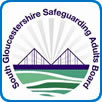Referral to the Bristol Neuro-Oncology Group
The Bristol Neuro-Oncology Group based at North Bristol NHS Trust accepts referrals from healthcare professionals for patients with suspected or proven brain or spinal tumours in adults over the age of 16.
If EMERGENCY TREATMENT is required for any of these conditions, direct referral is recommended via telephone to the on-call neurosurgical team on 0117 414 5726.
If you are experiencing difficulty with using the website or have specific questions about a patient for any of the MDTs, please see the help section.
General Neuro-Oncology MDT
(All referrals to this MDT are discussed on Wednesday morning every week. If this happens to fall on a bank holiday the MDT will be held on the most convenient day of the same week.)
The DEADLINE for receipt of referrals is 12 Noon on Monday every week . Any referral received after this time will only be discussed the following week. If the referral is more urgent please contact the on-call neurosurgical registrar at SouthmeadHospital
General Neuro-Oncology MDT
Please click on link to make a referral:
General Neuro-Oncology MDT Referral (NS - MDT) - new link to referapatient
Minimum Requirements
A recent MRI scan of the brain or spine with contrast. CT scan is only acceptable if MRI scanning is contraindicated. In a case of suspected metastasis, it is essential that a CT of chest, abdomen and pelvis is performed. All images must be transferred to North Bristol PACS to allow review at the MDT.
Description and Additional Information
Improving Outcomes Guidance (IOG, 2004/2005) from NICE states that every patient with suspected Brain cancer/Brain tumour should be discussed at a specialist Multi-disciplinary Neuroscience meeting to initiate appropriate definitive management. This MDT will review scans and clinical information predominantly of patients with intrinsic or intra-axial brain tumours (i.e. within the substance of the brain). These tumours could be primary or secondary brain and spinal cord tumours. Core Members within this MDT will also accept and treat simple convexity and parasagittal meningiomas. Complex Meningiomas, Meningiomas of the skull base as well as Acoustic Neuromas and Pituitary adenomas should be referred to the Skull base MDT ( see below).
A response to your referral will be sent electronically to the e-mail id of the referrer and the Consultant/GP responsible for the patient before noon on Thursday.
It will remain the responsibility of the referring consultant or GP and their team to advise patients and their families of the MDT outcome, as well as inform the MDT co-ordinator of any change in the patient's discharge status or clinical condition. It is inappropriate to ask patients and their relatives to contact Southmead Hospital directly for results of the MDT discussion. If patients are due to be seen by a core member of the MDT in an outpatient clinic then the patient will be contacted directly by either the Neurosurgical, Oncology or palliative care teams in a timely fashion provided such contact details have been provided on the online referral form.
It will also be the responsibility of the referring clinician to ensure that all relevant scans have been transferred to the PACS system at North Bristol NHS Trust (NBT). The referring clinician must request transfer of relevant images through their local radiology department to the NBT PACS system if discussion at the MDT is to be guaranteed. The MDT will be unable to provide any guidance if all the relevant scans are not available on the NBT PACS system on Wednesday morning. It is absolutely vital that if a recent MRI has been requested locally the scan is transferred across to North Bristol PACS prior to the MDT as we have no control over consistency in accessing imaging systems from other trusts. Also External PACS systems used for viewing images from other trusts cannot be reliably used for diagnostic radiology purposes.
General Information
This meeting is held at Southmead Hospital, Bristol every Wednesday at 9 AM.
Skull Base MDTs
(Referrals for all three tumour groups below are discussed fortnightly on the 1st and 3rd Monday of the month)
Please Note: The deadline for receipt of referrals is 7AM on the preceeding Friday.
Skull Base MDT Referral
Please click on link to make a referral:
Skull Base MDT Referral - new link to referapatient
(If in doubt about the exact location of the tumour within the brain please refer to the General Neuro-Oncology MDT above, and it will be forwarded to the appropriate MDT for discussion. This will however delay the final specialist advice from the correct MDT by at least a week)
Minimum Requirements
A recent MRI of the brain
Description and Additional Information
To refer skull base menigiomas & other rare skull base tumours (skull base tumours other than acoustic neuromas or Pituitary adenomas). It will be the responsibility of the Referring clinician to ensure that all relevant scans have been transferred to the PACS system at North Bristol NHS Trust (NBT). The MDT will be unable to provide any guidance if all the relevant scans are not available on the NBT PACS system on Monday morning.
General Information
The Skull Base MDT, Acoustic Neuroma Service and The Pituitary service have been merged into a single Multi Disciplinary Team (MDT). These MDT meetings now take place on the first , third and fifth Thursday of every month starting at 12:30 PM at Southmead Hospital, Bristol.
Bristol Acoustic Neuroma Service
Please click on link to make a referral:
Bristol Acoustic Neuroma Service - new link to referapatient
Minimum Requirements
MRI scan of the posterior fossa and Internal auditory meatus (contrast CT scan if MRI contra-indicated). Pure tone audiogram and speech audiogram (if patient has serviceable hearing).
Description and Additional Information
It will be the responsibility of the Referring clinician to ensure that all relevant scans have been transferred to the PACS system at North Bristol NHS Trust (NBT). The MDT will be unable to provide any guidance if all the relevant scans are not available on the NBT PACS system on Monday morning.
General Information
The Skull Base MDT, Acoustic Neuroma Service and The Pituitary service have been merged into a single Multi Disciplinary Team (MDT). These MDT meetings now take place on the first , third and fifth Thursday of every month starting at 12:30 PM at Southmead Hospital, Bristol.
Bristol Pituitary Service
Please click on link to make a referral:
Bristol Pituitary Service - new link to referapatient
Minimum Requirements
A recent MRI of the brain. A recent visual field assessment is desirable.
Description and Additional Information
To refer patients with a pituitary lesion diagnosed on imaging for discussion.
It will be the responsibility of the Referring clinician to ensure that all relevant scans have been transferred to the PACS system at North Bristol NHS Trust (NBT). The MDT will be unable to provide any guidance if all the relevant scans are not available on the NBT PACS system on Monday morning.
General Information
The Skull Base MDT, Acoustic Neuroma Service and The Pituitary service have been merged into a single Multi Disciplinary Team (MDT). These MDT meetings now take place on the first , third and fifth Thursday of every month starting at 12:30 PM at Southmead Hospital, Bristol.


 Abuse is a violation of a person’s human or civil rights. It can be unintentional or deliberate. Abuse can be:
Abuse is a violation of a person’s human or civil rights. It can be unintentional or deliberate. Abuse can be:
